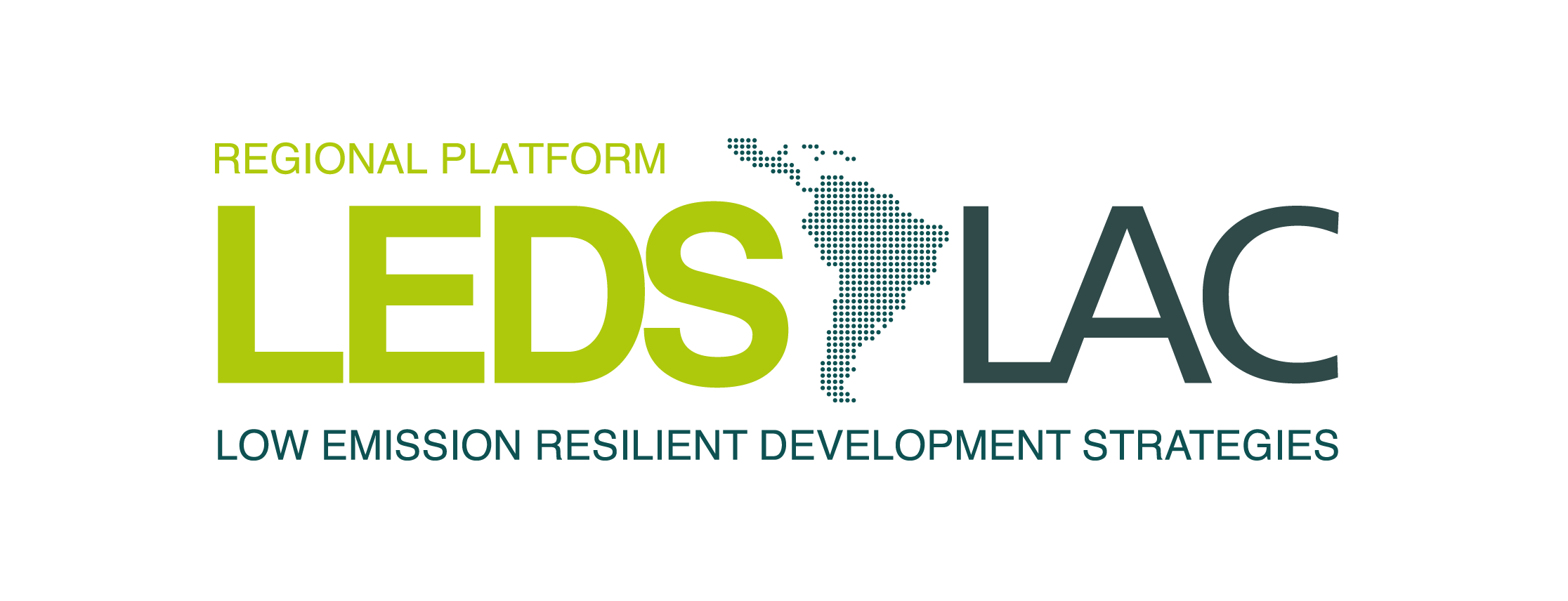Messages from the Latin American and Caribbean Climate Week multilevel governance session
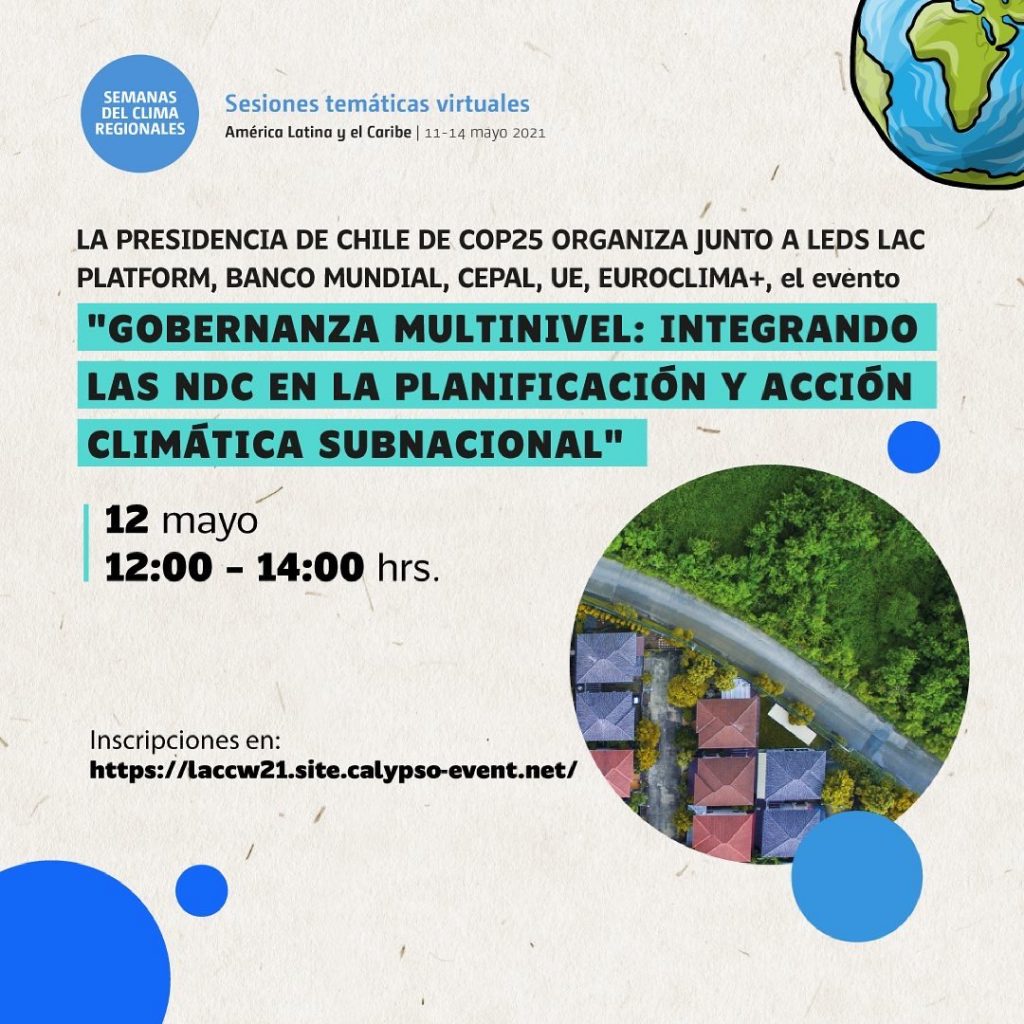
- Authors: Aida Figari (LEDS LAC), Jordan Harris (Chair COP25)
Today (May 12), within the framework of the Latin America and the Caribbean Climate Week, the session ".Multilevel governance: Integrating NDC implementation with subnational planning and action". It was co-organized between the World Bank, the COP25 Presidency/Ministry of Environment of Chile and the LEDS LAC platform with the support of ECLAC, EU, EUROCLIMA+, GCoM, ICLEI, C40, FLACMA, CC35, and The Climate Group with the objective of sharing regional experiences that contribute to strengthen the discussion on the importance of multilevel governance for ambitious climate action as well as to identify good practices of integration of subnational climate action.
With welcoming remarks by Minister Carolina Schmidt, President of COP25, and Felice Zaccheo, Head of the European Union's Regional Operations Unit for Latin America and the Caribbean, the session emphasized the strength of multilevel action on the road to resilient and net-zero emissions development, and addressed the issue through two panels with a diversity of regional experiences.
The first panel "Integrating subnational governments in climate policy formulation and NDC updates". showed us the opportunities and challenges of multilevel articulation from the perspectives of three different levels of government. Under the moderation of Joseluis Samaniego, Director of ECLAC's Sustainable Development and Human Settlements Division, we explored these diverse experiences:
- From the municipal level with the participation of Ximena Giraldo Malca, Manager of City Services and Environmental Management of the Metropolitan Municipality of Lima. The city of Lima is about to approve the Climate Change Plan for Lima to 2030 with a prospective view to 2050 and the goal of being carbon neutral.
- From the state level with the participation of Inamara Melo, Executive Secretary of Environment and Sustainability, State of Pernambuco, Brazil. From Pernambuco, it was explained that the most important sectors in terms of emissions are agriculture, forests and waste, and that they are working on their decarbonization pathway that includes short, medium and long term goals, and measures that have been adapted to the reality and context of the territory.
- From the national level with the participation of Florencia Mitchell, National Director of Climate Change of the Ministry of Environment and Sustainable Development of Argentina. The process for updating Argentina's NDC, communicated to the UNFCCC in December 2020, was carried out through the National Climate Change Cabinet (GNCC), through strategic articulation between different areas of the national government, subnational governments and civil society actors. Of particular importance is the work of the Provincial Articulation Table, an instance that supports the development of subnational Climate Change Response Plans.
The second panel on "Implementation of climate actions at the subnational level"The objective of the workshop was to discuss concrete experiences of subnational governments, emphasizing the opportunities taken advantage of, financing mechanisms, and the required articulation with multiple levels and sectors. Under the moderation of Jordan Harris, Coordinator of Subnational Governments and Climate Action of the COP25 Presidency, three cases were shared:
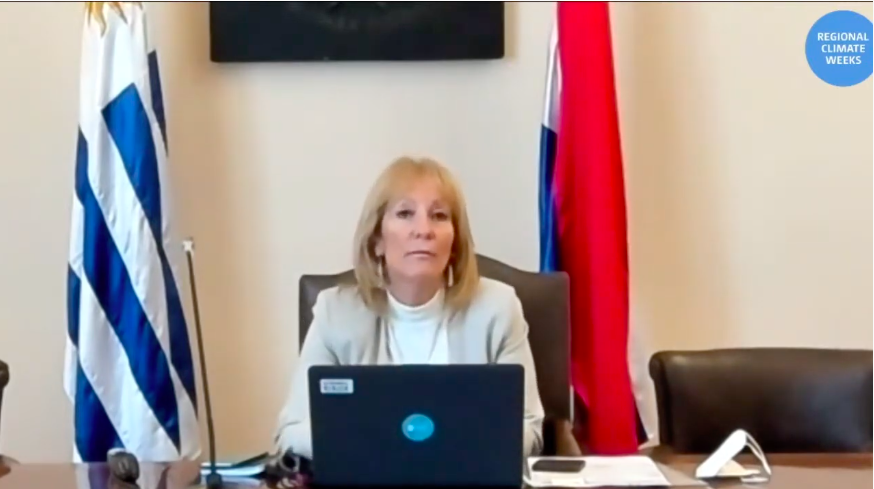
Carolina Cosse, Mayor of Montevideo, Uruguay.
Montevideo's actions are part of Uruguay's 2050 strategy, which includes a carbon neutrality goal. Mitigation and adaptation actions are mentioned, such as a biogas capture plant, promotion of electric transport, protection of the coastline with sand recharge, a solution to urban drainage, and a healthy eating project that includes promoting the consumption of fruits and vegetables from rural Montevideo. The actions combine the use of the city's own budget and, in some cases, support from the Inter-American Development Bank (IDB). It is recognized that the communication component with the population is important because they are a fundamental ally in fostering greater ambition in subnational climate action.
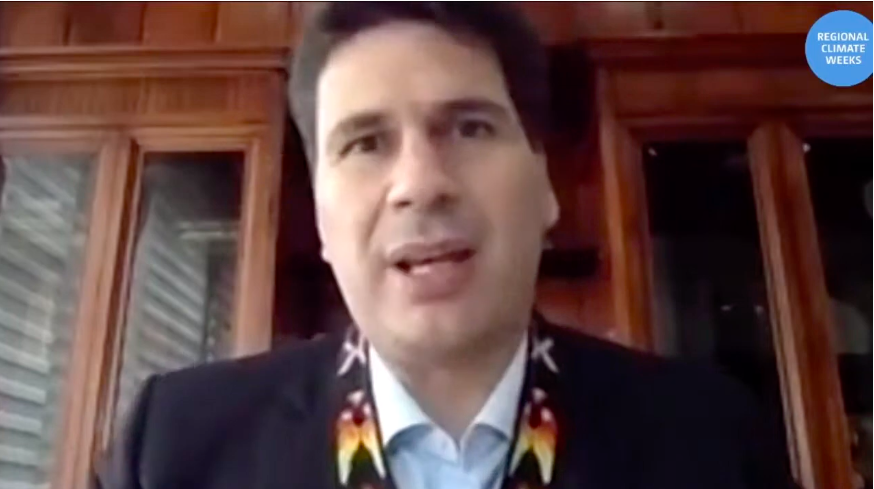
Pedro Palacios, Mayor of Cuenca, Ecuador.
It is recognized that the contribution of the Canton of Cuenca represents only 3% of Ecuador's GHG emissions, however, there are great efforts in climate matters, taking advantage of the city's own opportunities. The Pichacay waste management project was shared. As part of a public-private partnership with a Dutch company, electricity is generated and connected to the public energy matrix, benefiting 8,000 families. There are also other important projects such as the inclusive recycling of plastic, which, through an environmental exchange with recyclers, allows the production of equipment for parks and gardens. He also highlighted a riverbank forest conservation program to protect the watershed, and the projection of other public-private partnerships to electrify public transportation, which is the main source of GHGs. These and other climate actions have allowed Cuenca to move from a grade of D received in 2018 by the Covenant of Mayors to a current grade of B with respect to its GHG emissions, which represents an important advance considering that the average grade in the region is a C.
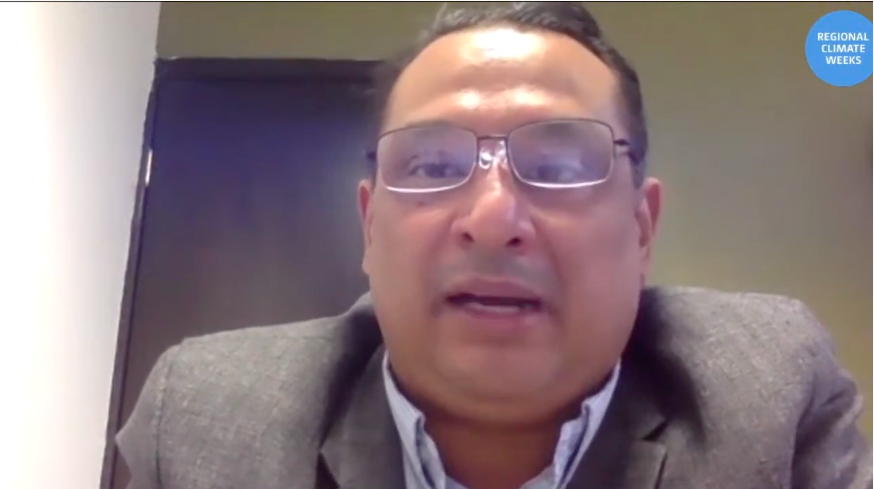
Juan Quimbar, Director General Cambio Climático, State of Sonora, Mexico.
In the State of Sonora, 80% of GHG emissions come from energy. In a project involving the World Resources Institute (WRI), a panel of experts from local academia, representatives of the private sector, the municipality of Hermosillo as the capital of Sonora, and the federal government through its energy efficiency program, a challenge was carried out, inviting buildings to reduce their energy consumption in a calendar year. A technical diagnosis was provided as a baseline and efficiency alternatives were offered, being the investments made by private parties that recognized savings in operating costs in the long term. Results were seen in the reduction of electricity bills and a "culture" of energy efficiency was generated among Sonorans. The case presented generated great interest from the Mayor of Montevideo, Carolina Cosse, who asked for more details and great potential for collaboration between cities, sharing their experiences and actions in energy efficiency.
The reflections resulting from having listened to this diversity of experiences from both panels allow us to rescue:
- Different roles from different levels: Each level has different opportunities, challenges and roles that, nevertheless, require close articulation and communication, which is a two-way process. The national level provides the general framework (e.g. Climate Change Laws and Policies, international commitments such as the NDCs under the Paris Agreement, National Energy Efficiency Programs, among others); the state/regional/provincial level acts as a hinge, articulating the national with the local and adapting the measures to specific territorial contexts (e.g. decarbonization trajectories, action plans and strategies, action plans and strategies, etc.). The municipal level is close to citizens, can influence behavioral changes and facilitate the implementation of high impact local actions (e.g. biogas use for electrification of cantons, inclusive recycling, nature-based solutions, sustainable transport and mobility, among others).
- Articulation spaces: The Paris Agreement, which in practice decays into internal processes of updating NDCs or planning long-term strategies by countries, evidences the need for multilevel and multi-stakeholder articulation processes, and triggers the creation of spaces for consultation and participation. The experiences shared show both top-down and bottom-up paths, with respect to consultation, planning or validation processes of public policies, as well as the establishment of formal articulation and participation mechanisms in different instances (e.g., provincial articulation table that is part of Argentina's Climate Change Ministerial Cabinet).
- Quadruple helix: The experiences shared show the value of the "quadruple helix" to advance in the effective implementation of climate actions, understood as the coordinated push given by the participation of the public sector, private sector, academia and civil society. The Cuenca biogas electricity generation project and the energy efficiency program for buildings in Sonora were given as examples. These examples, and the strength that the multilevel and multisectoral approach brings to the implementation of climate actions, demonstrate the growing need to institutionalize and formalize planning, coordination and implementation mechanisms that consider the participation of different actors at different levels of governance.
- Major challenges: The processes that are strengthened by the articulation between different levels, sectors and actors, from national commitments such as the NDCs, long-term strategies (whether at the country or subnational level), climate change plans or the implementation of climate actions face the challenge of how to find complementarities and synergies between the different parties, and how to ensure efficient articulation with the speed required to address the climate urgency. A second challenge is with respect to the monitoring of results (in terms, for example, of emission reductions) being on the one hand the challenge of how to avoid double counting and on the other hand how to account for the full impact of subnational actions that may be escaping registration. This last challenge is of utmost importance, since it represents the main obstacle to be able to account for the contributions from subnational climate actions to the fulfillment of national commitments, as well as the effectiveness of national policies to achieve mitigation and adaptation to climate change in the territories.
